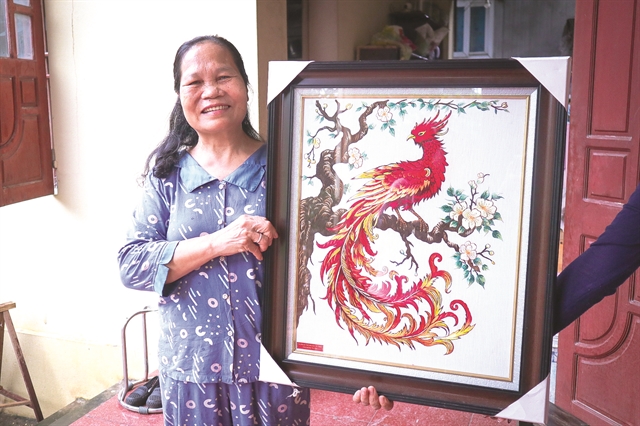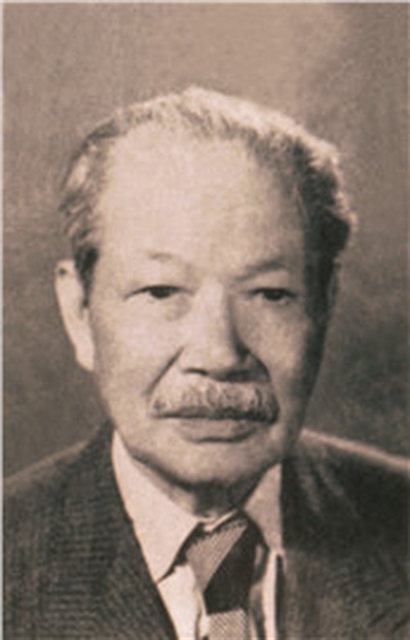 Features
Features

Many major contemporary transport and irrigation system of Việt Nam still retain the imprints of the first Minister of Transport and Public Works of Việt Nam, Đào Trọng Kim (1897 - 1984).

|
| LEADER: Việt Nam's first Minister of Transport and Public Works Đào Trọng Kim. File Photo |
By Vũ Như Chương
Major transport and irrigation prọjects in Việt Nam still bear the imprints of first Minister of Transport and Public Works Đào Trọng Kim (1897-1984)
As an engineer graduating from École Supérieur des Pontet Chaussée de Paris in France, Kim was invited to join the newly-established government by President Hồ Chí Minh, following the successful August 1945 Revolution, together with 12 ministers and patriots, including Võ Nguyên Giáp, Phạm Văn Đồng and Trần Huy Liệu.
Kim was one of the few ministers in the nation’s young government at that time to hold specialist knowledge in the field, and dedicated his life to his work, regardless of his position in society – from being a senior leader and technician, to specialised consultant.
His lifelong contribution to the national public works system has been praised in two chronicles released by the Ministry of Transport and the then Ministry of Irrigation.
In the books, he was listed above all other senior officials of the two ministries since the August Revolution even though his term lasted only from August 1945 to March 1946.
According to records, Kim started working as a technician at the age of 19 in 1916 after graduating from vocational school.
In 1930, thanks to working and studying at the same time, he passed the entrance exam to the College of Public Works of Paris, or École Supérieur des Pont et Chausée de Paris, becoming the first Vietnamese person from northern Việt Nam to receive a BE in Transport-Public Works.
Thanks to his hard work, he was promoted to director of the sector of public works in northern Việt Nam.
Before taking charge, he had held various positions in mountainous and central regions such as Lào Cai, Lạng Sơn and Bắc Giang, leading many French officials under his command.
Bridges, sewers, roads, dams and irrigation projects were constructed during Kim’s term in the French colonial period.
Notably, he requested a survey and construction of the road that is presently known as National Highway 7, a major transport route west of the central province of Nghệ An, connecting Việt Nam with Luang Prabang in Laos.
After 29 years, Kim was appointed the first Minister of Transport and Public Works for the Democratic Republic of Việt Nam by the president of the young government, Hồ Chí Minh, after the victory of the August Revolution 1945.
At the age of 48, the new minister immediately set to work by fighting historical flooding that submerged over 350,000ha of agricultural land along the Red River.
The new minister was then challenged by a severe drought in the Red River Delta that affected a much larger area than the flooding.
Kim accompanied President Hồ to visit villagers who had suffered to encourage them and offer support.
After just six months, he handed over his responsibilities to a minister in the new government that was established in January 1946.
Becoming an ordinary citizen, the former minister refused to receive pension in sympathy with the new Government which had a nearly empty temporary state budget in the context that the nation was in danger of being invaded again by foreign forces.
In December 1946, the resistance war against the French broke out, Kim’s life was threatened when he and his family were captured as they tried to escape from the occupied area.
Suspected as a member of the resistance, he was lined up for execution.
His life was saved when a Vietnamese member of the patrol recognised him as an engineer and former official during the French colonial period. He was sentenced to three months in Hỏa Lò Prison.
Released from prison, the engineer returned to live with his family in Hà Nội, leading an ordinary life. However, shortly after, when former King Bảo Đại was named head of state in the temporary government in the French-occupied zone, the northern bureau of public works was handed back to Việt Nam, and Kim was asked to work as professional consultant.
He took over the position until October 1954 when Hà Nội was liberated by the resistance force, and Bảo Đại’s puppet government was withdrawn to the south.
Kim stayed back in Hà Nội, preserving the dossiers of the northern bureau of public works to hand over to the government of the Democratic Republic of Việt Nam.
Two months later, on January 1, 1955, the engineer was asked by the Ministry of Transport and Public Works to work as a researcher.
Returning to work for the ministry to take over new duties at the age of 58, Kim immediately embarked on irrigation and highway extension projects as northern Việt Nam started to recover.

|
| LEGACY: Minister Kim made significant contributions to a series of major projects such as Suối Hai Lake on the outskirts of Hà Nội. Photo foox.vn |
Shortly after that, he was promoted to Deputy Director of the Bureau of Investigation and Design at the end of 1955. The promotion, according to the Ministry of Transport and Public Works, aimed to utilise his expertise.
From 1955 till his retirement at 67 in 1964, Kim worked on evaluations, adjustments and proposals for irrigation projects, including reservoirs and pumping stations in the Red River Delta, as well as in many northern provinces.
These projects significantly contributed to the economic development in the north at that time.
According to engineer Hoàng Xuân Hồng, Kim made significant contributions to a series of major projects such as Suối Hai Lake in former Sơn Tây Province on the outskirts of Hà Nội, with a capacity of 50 million cubic metres, and a reservoir on Cấm Sơn River in the northern province of Lạng Sơn that irrigated a vast area in Bắc Giang and Bắc Ninh provinces.
Phan Khánh, former secretary of the ministry and also head of the department of Historical Documents of the Ministry of Irrigation, confirmed that Kim was a man dedicated wholeheartedly to his work.
“This is not my opinion but that of others as well. His professional contributions were important, and recognised by other specialists and highly appreciated by the younger generation of engineers,” he added. VNS